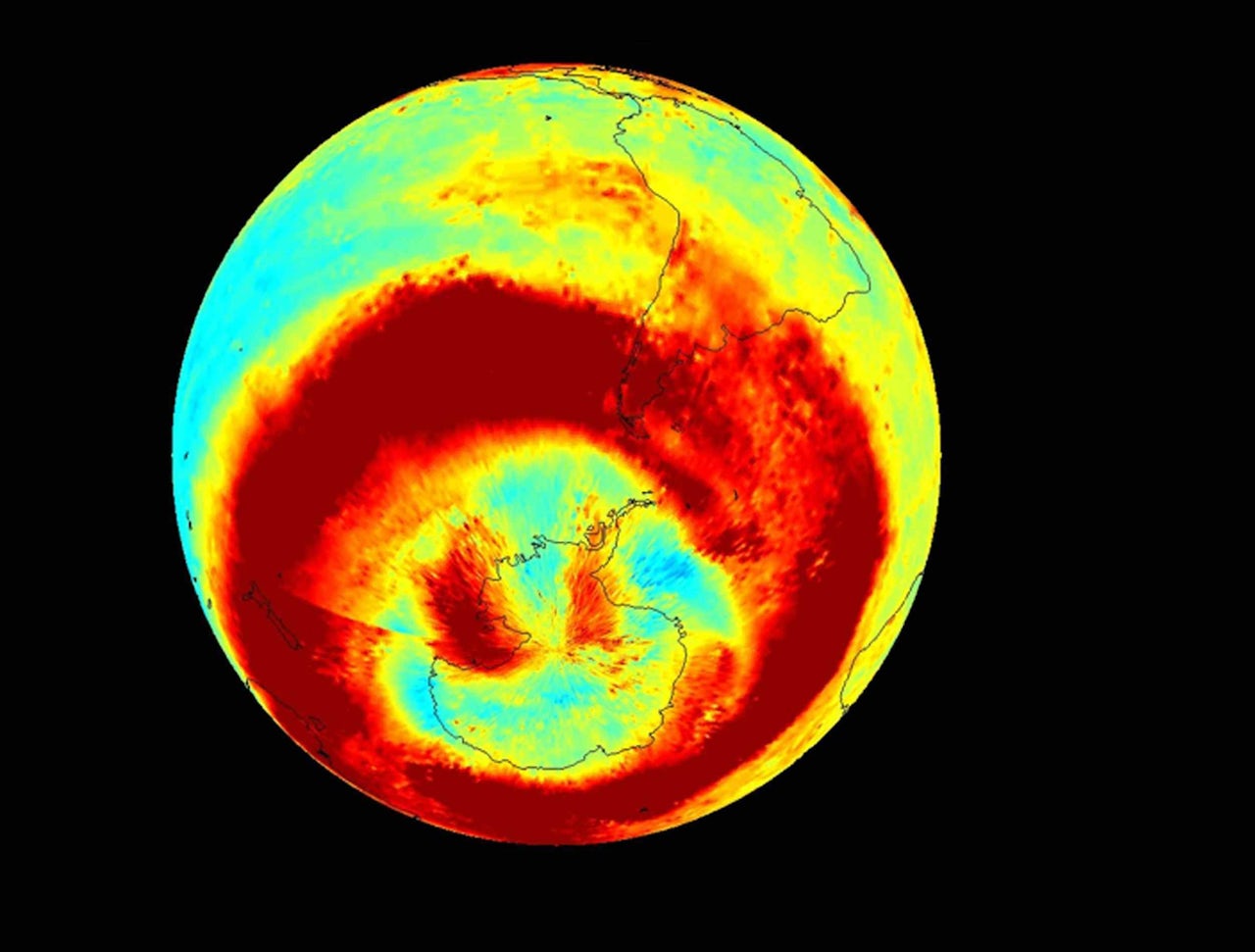Last month, a study published in Natureexposed perhaps the biggest environmental scandal of the twenty-first century: CFC-11, a ozone layer-depleting greenhouse gas whose production has been illegal since the Montreal Protocol in 1987, is being emitted at an industrial scale. The CFC-11 in question is possibly being emitted by factories rushing to meet extremely high demand for polyurethane foam insulation that is, ironically, meant to help buildings meet green standards.
On Monday, The New York Timespublished a report asserting that it may have located the source of the emissions: the Shandong province of China, a sprawling landscape known for industrial-scale farming and a large collection of small-fry factories owned and operated by working class people, was probably producing polyurethane foam. It’s a cheap, organic compound that comes in a can, and when used, it can trap heat and cool air inside buildings.
Tax credits in countries like the U.S. encourage buying energy-efficient appliances, and creating well-insulated, environmentally-friendly buildings. The goal of these credits is noble: to emit less energy, and hopefully fight climate change. However, it’s difficult for small manufacturers to meet the demand for materials that will help buildings comply with these policies. The livelihood of manufacturers and their families may depend on how much foam they can sell. Meanwhile, they have to keep up with the low prices and large-scale production offered by other manufactures.
Polyurethane foam that creates CFC-11 as a byproduct is cheaper to make, but the environmental costs are disastrous. CFC-11 is a complex molecule with carbon, fluoride, and chlorine, making it thousands of times more potent than carbon dioxide as an earth-warming greenhouse gas. The molecule also converts ultraviolet radiation-shielding ozone in the atmosphere into oxygen. It’s so efficient at this conversion that after just a few decades of its emission during the twentieth century, a huge hole opened up in the ozone layer directly above Antarctica.
While emitting CFC-11 is explicitly, internationally illegal, demand for polyurethane foam has never been higher. The annual demand in 2015 was 9.46 million tons, and by 2024, it’s expected to grow to 12.74 million tons. As a result, polyurethane foam production is expected to increase four to five percent every year, at least through the end of the decade.
The Times shed light on a crucial detail: there are economic reasons that manufacturers opt to emit CFC-11 — whether or not the choice is intentional. Zhang Wenbo, who owns a small refrigerator company in the Shandong province and emits CFC-11 to make polyurethane foam, told the Times, “You had a choice: choose the cheaper foam agent that’s not so good for the environment, or the expensive one that’s better for the environment.”
For major polyurethane foam suppliers, like BASF, Huntsman Chemical, and Trelleborg Chemical, it’s not so hard to get these tax credits while complying with CFC-emission regulations. These companies have been independently assessed by groups like CentriPUR-US and Greenguard, which set even higher standards than international regulations regarding the use of flame retardants, heavy metals, and of course, CFCs.
In an email to The Outline, Hadi Dowlatabadia a professor at the the University of British Columbia's Institute for Resources, Environment and Sustainability, said that It’s important to remember that China isn’t just sitting pretty as manufacturers emit CFC-11.
��China is working hard towards improving the welfare of its people,” Dowlatabadi said. “What is surprising is that they were unaware of CFC production for cheap foam production. But I do not think environmental protection and regulatory oversight in [Western countries like] Canada is in any way superior to China.”
Since 2002, China’s Environmental Impact Assessment Law has required government workers to review factories periodically, making sure they’re complying with national and international law. In 2014, China strengthened the law to make it even tougher on manufacturers and polluters. But with a population of over 1.3 billion people, certain violations slip through the cracks.
Stephen Mozaka, an atmospheric chemist and the lead author of the Nature study, Paul Newman, an atmospheric scientist and co-chair of the Montreal Protocol’s Scientific Assessment Panel, told The Outline that we should be slow to jump to conclusions, or make this a finger-pointing game directed at China.
“It’s too early to say what the quantities [of CFC-11] are, and if they can explain what we are seeing in the atmosphere or if these are other contributors,” Mozaka wrote in an email to The Outline. “It is rather hard to imagine that this activity explains all of the signal that we are observing in the atmosphere.”
In his paper, Mozaka considered air circulation patterns to narrowed down the source of the emitter to a region — East Asia. The area covers over 4 million square miles, but Mozaka was vague on purpose. Without hyperlocal data, extracted from remote locations in vials and tested in labs, it’s impossible to say whether a single city, province, or even country is responsible.
Newman said in a phone call with The Outline that there are lingering questions that only thorough data collection and review can answer.
He said that CFC-12 — a marginally different molecule from CFC-11 that’s just about as harmful to the environment — is often created alongside CFC-11 in almost equal amounts. CFC-12 is stored inside the insulation of appliances like refrigerators and air conditioners, meaning it’s often not emitted until these appliances rot in landfills
“We need experts to evaluate plants in question and make sure that CFC-11 is the only gas being produced,” Newman said. “It’s not just one gas that I’m worried about. I’m worried about three: CFC-11, CFC-12, and [other greenhouse gases].”
“I'm looking into further analyses that might help with [country-specific data],” Mozaka said. “But I don't know if they will be successful and they will take a bit of time to do.”


